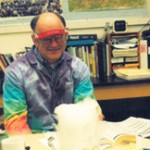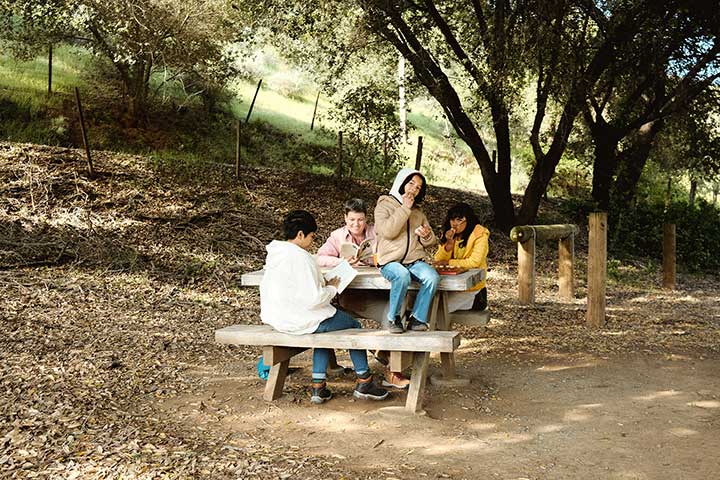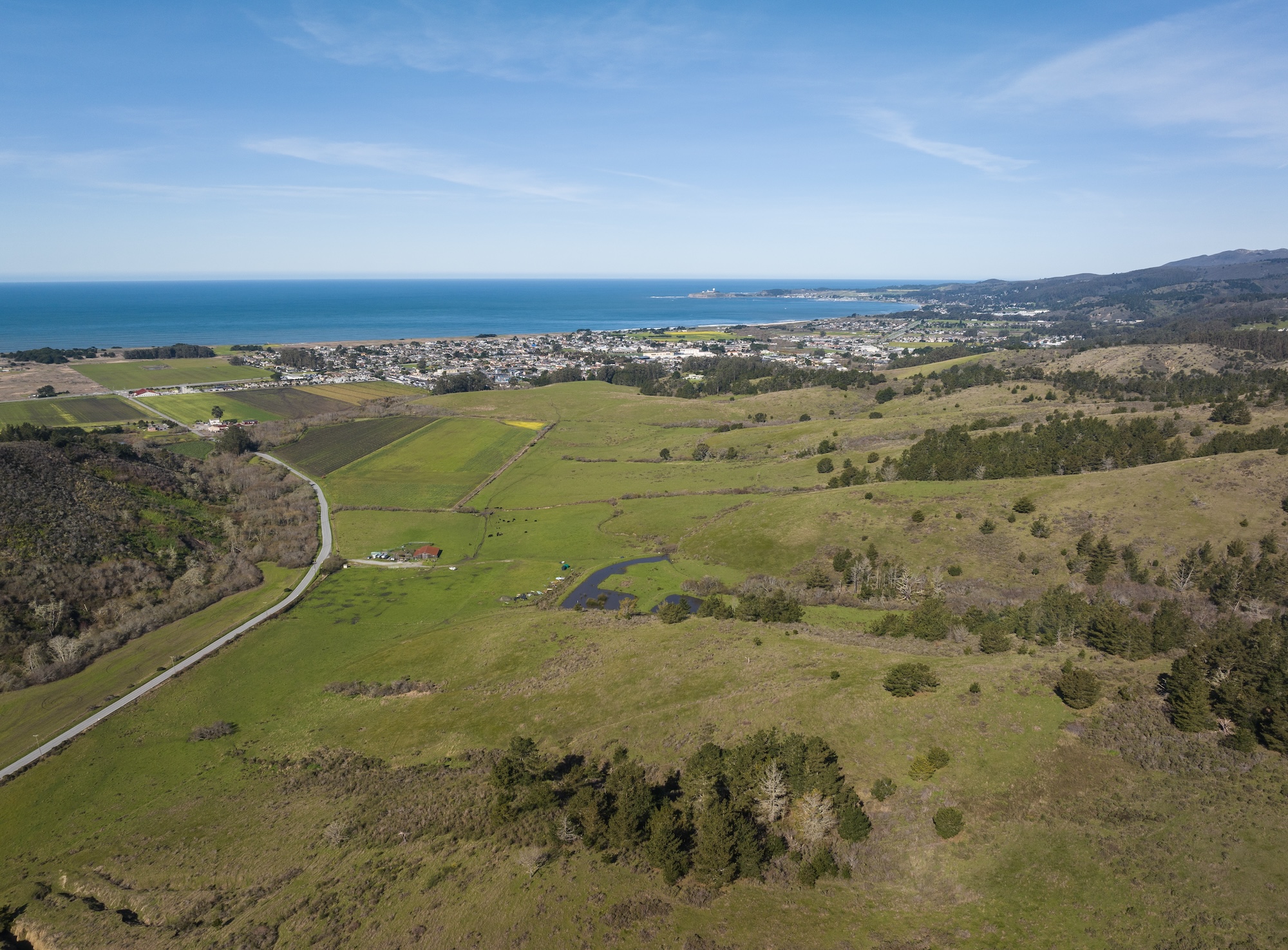Imagine a tiny public high school in a stunning coastal valley framed by beaches, estuaries, redwood forests, the Santa Cruz Mountains, and nearby agricultural fields. In this tiny school, seven teachers labored to provide a quality education to 100 students in grades 8-12.
Although the setting for this scene was so idyllic, its small size made teaching and learning at Pescadero High School challenging for students and faculty alike. In my case, I was the sole science teacher, simultaneously instructing students in AP biology, biology, chemistry, physics, and more, a courseload that would normally be taught by several teachers in a larger high school. The English, social science, mathematics, art, business, and home economics teachers had similarly busy schedules, making collaboration with our colleagues a difficult endeavor.
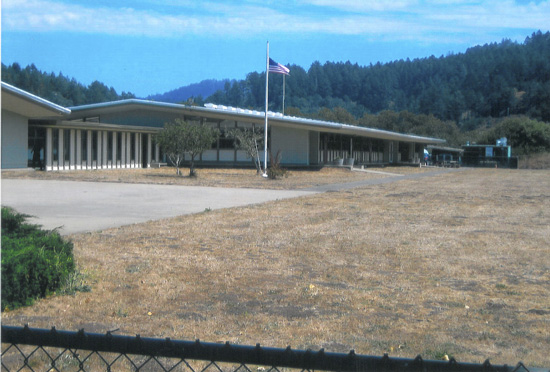
The spectacular view out my window provided daily inspiration to incorporate the local environment into every aspect of my teaching. This dream became a reality when we received a major grant from Apple in 1991, which allowed us to develop a school-wide curriculum about the local environment through studying the population of steelhead in nearby Pescadero Creek. Thanks to the grant, the faculty was able to collectively design a cross-disciplinary curriculum of off-campus experiences that would involve all the students at the school.
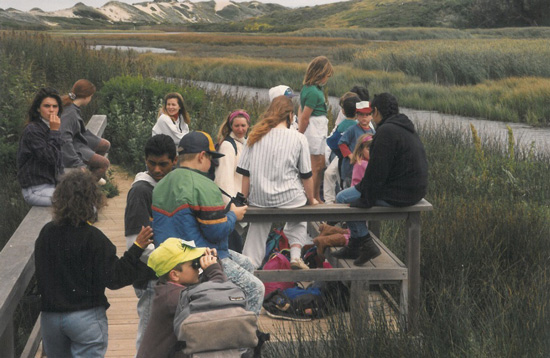
Programs in the Watershed Project included Native American Studies, Photography, Design in Nature, Tour de Watershed, Edible Delights, Mapping the Watershed, Land and Uses of the Watershed, Field Investigations, Water Law, Oral Histories, Steelhead Migration (including trap maintenance), and Water Quality Analysis. One benefit of the school’s small size was that we could easily adapt the program to the interests of each year’s faculty and students. Though the subject matter shifted over the years, from 1991-1997, Wednesdays were known as “Watershed Day” at Pescadero High School.
The Watershed Project was well-received, but one issue threatened to block our efforts. Many Latino students were initially unenthusiastic about participating in fieldwork. Their parents, who labored in the fields near our school, did not appreciate that their children would be doing physical labor on school time. After reviewing the options with their families, these students found a good fit in the Design with Nature unit. This proved an excellent starting point, as many eagerly expanded their involvements from there.
Word of our work spread, and scientists and journalists from near and far came to Pescadero High School to see the Watershed Project in action. Two notable visits come to mind: a Russian group from Krasnoyarsk, Siberia and a Japanese group from Kyoto, Japan. The Russian delegation included several environmental scientists and after enthusiastic reviews of our work, they invited our students to visit their city in Siberia. After a strenuous fundraising effort, we were able to send Peter Panofsky and Evelyn Grimm. Returning from their life-changing trip, they gave glowing presentations of their travels.
The effects of the Watershed Project on the students lasted far beyond its eight-year tenure. Most importantly, students began to see that creek as something they should protect. Before the project, many students spearfished for steelhead at night in the Creek, but afterward, they protected the fish as they manned the trap. When vandals pulled the trap out of the water and dumped the young fish on the bank, killing 25 young steelhead, students and the community were thoroughly outraged. After years of taking care of the fish and the creek, an attack on the creek had become a personal matter to the students.
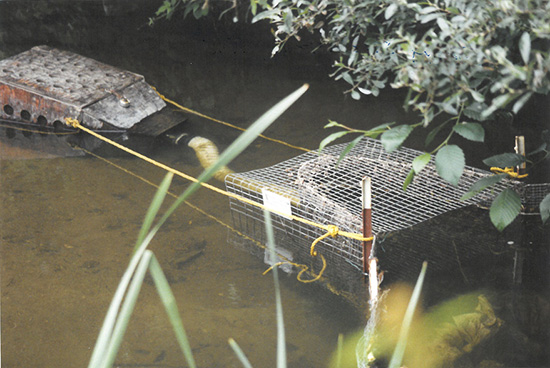
Sometimes the effects of environmental education are much more subtle. One day near the end of the project, I recruited two young men to do some work with me on aquatic insects. They were a study in contrasts: one was the student body president and on his way to U.C. San Diego, while the other continuously struggled in school and with behavior problems. Using waders, we worked our way along the creek looking for mayfly larvae, and caddis fly larvae. After we completed work, we pooled the data and the student struggling in school gathered the
most impressive list of aquatic insects, proving himself a superior field worker. Walking back to the classroom I asked him why he did so well in the field and he said, “I don’t know. I’m a different person outside the classroom. It might be that I’m part Cherokee Indian.” Whatever the cause of his excellence, this young man had found a place for his interests and skills. Beyond just learning about the local environment, the Watershed Project helped the students learn about themselves.
Coming up: we hear from PHS students who participated in the Watershed Project!
Steve Maskel is a retired science teacher who directed a celebrated Watershed Project at Pescadero High School from 1990-1997. This is the second entry in a series of blogs he is writing for Field Notes.
More on Our Website
About Post
Peninsula Open Space Trust (POST) protects open space on the Peninsula and in the South Bay for the benefit of all. Since its founding in 1977, POST has been responsible for saving more than 87,000 acres as permanently protected land in San Mateo, Santa Clara and Santa Cruz counties. Learn more
